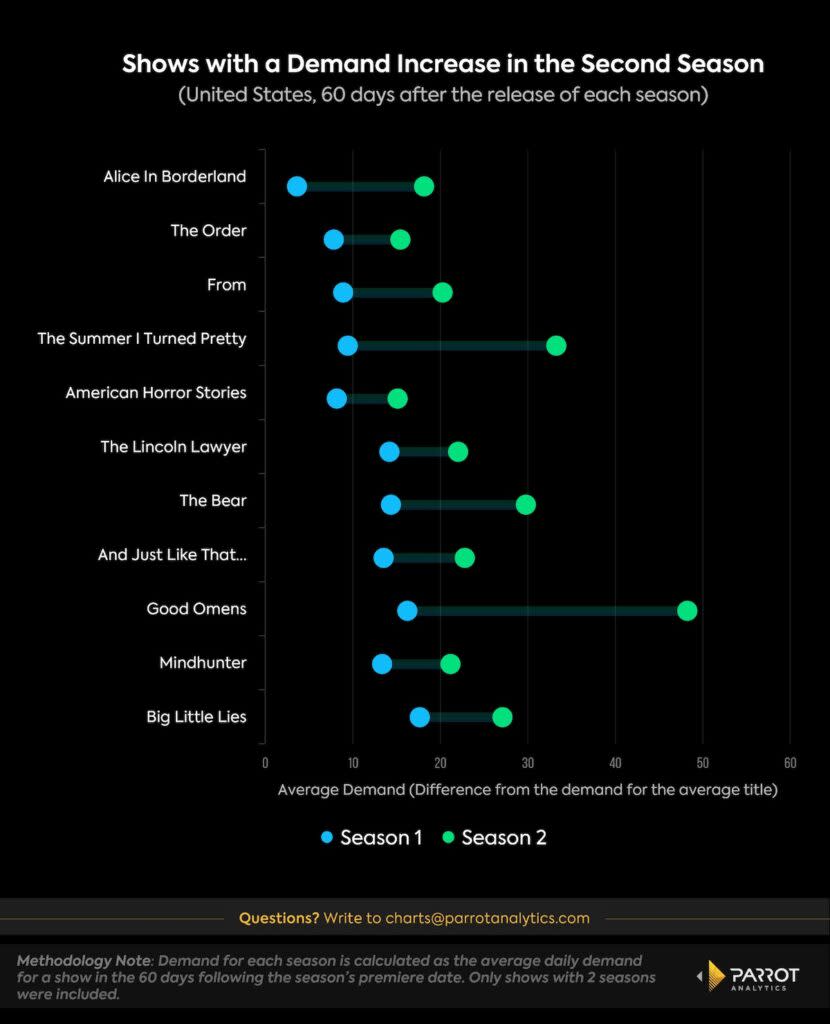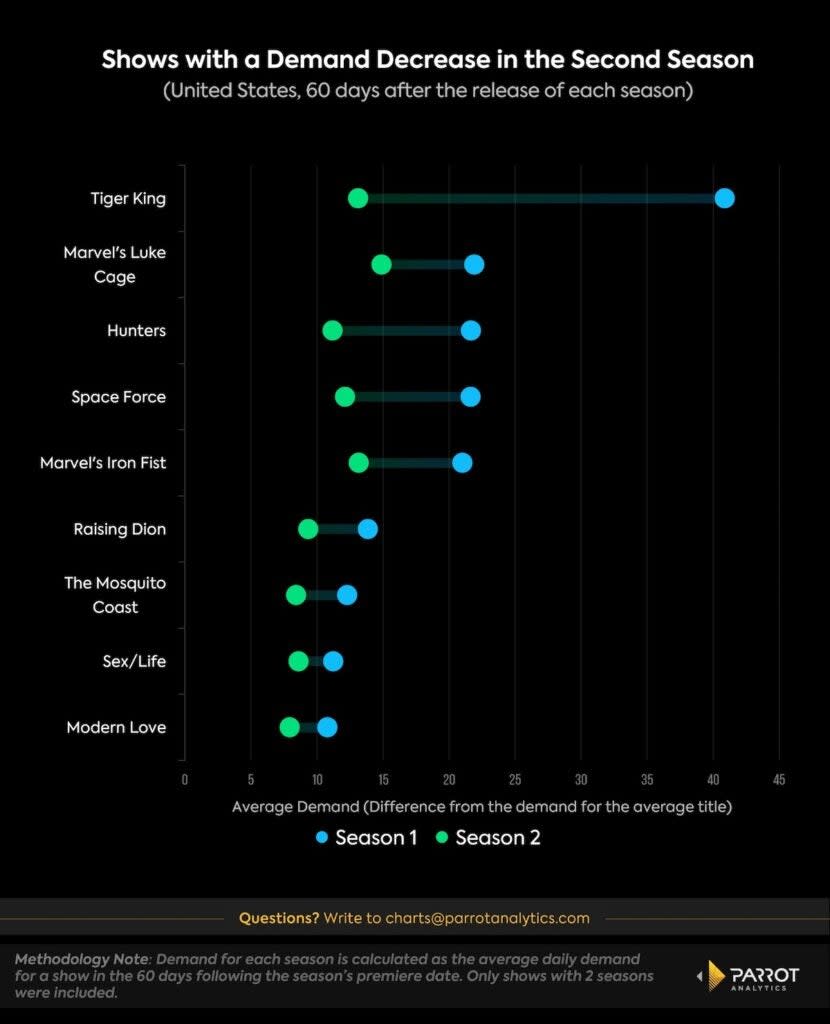Sophomore Surge or Slump? Why Some Shows Thrive in a 2nd Season | Charts
- Oops!Something went wrong.Please try again later.
Television is notorious for its unpredictable outcomes. Some series achieve instant acclaim, while others fade into obscurity.
The question of why some series take a second season to catch on is increasingly compelling as streamers seem readier than ever to ax underperforming new shows. But could that mean missing out on the next hot show? The latest example is Amazon Prime Video’s “The Summer I Turned Pretty.” After a solid debut, its second season saw an explosive 250% growth in demand.
For every “Summer,” though, there’s a first-season hit that flops in its sophomore season. The most striking illustration of this is “Tiger King,” which saw its demand plummet by 67% in its second season.

Recent data from Parrot Analytics shows how audience demand for certain shows evolved between the first and second seasons.
First, we examine shows with a relatively modest first season but an outstanding second season. In terms of demand metrics, this means that these shows had more than 10 times the demand for the average show in the first 60 days of the second season, a level reached by less than 2.7% of TV series.
Netflix’s Japanese live-action series “Alice in Borderland” registered an average demand of 3.6 times the demand for the average show after its first season’s global debut. While the show received varied reviews, the second season delved deeper into its foundational concepts, and demand skyrocketed by nearly 400%.
Netflix’s “The Order,” MGM+’s “From,” and Hulu’s “American Horror Stories” also had at least an 80% surge in demand in their second season.
A remarkable success was British fantasy-comedy “Good Omens,” which saw demand rise by almost 200% despite an extended four-year gap between its season releases on Amazon Prime Video. It took two years for Amazon to greenlight the second season, which came after a religious group sought to have Netflix — yes, Netflix — cancel the show.
Another recent show, the acclaimed Hulu original “The Bear,” saw demand double from season to season. Others with a significant rise between their initial two seasons include “The Lincoln Lawyer,” “And Just Like That,” “Mindhunter,” and “Big Little Lies.”

Some shows, on the other hand, just couldn’t sustain their first-season momentum. The second season of “Tiger King” came after the first season had seemingly exhausted the narrative, for example.
Several Netflix originals also witnessed a drop-off in demand after a promising start. “Marvel’s Luke Cage,” “Marvel’s Iron Fist,” “Space Force,” “Raising Dion,” and “Sex/Life” couldn’t sustain the excitement generated in their initial season. Prime Video’s “Hunters” and “Modern Love,” along with Apple TV+’s “The Mosquito Coast,” had more demand for their first season than the second. All of these shows were canceled or concluded their runs after the first two seasons.
A potential factor influencing these declines could be the timing of their releases. The first season of “Tiger King” in March 2020 coincided with the pandemic’s onset, a period witnessing an unprecedented surge in streaming consumption. By its second season in late 2021, this pandemic-driven demand had normalized, possibly widening the demand gap between the two seasons. Other shows such as “Hunters” and “Space Force” may have been affected by pandemic timing as well.
Daniel Quinaud is a senior data analyst at Parrot Analytics, a WrapPRO partner. For more from Parrot Analytics, visit the Data and Analysis Hub.
The post Sophomore Surge or Slump? Why Some Shows Thrive in a 2nd Season | Charts appeared first on TheWrap.

